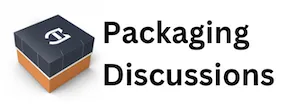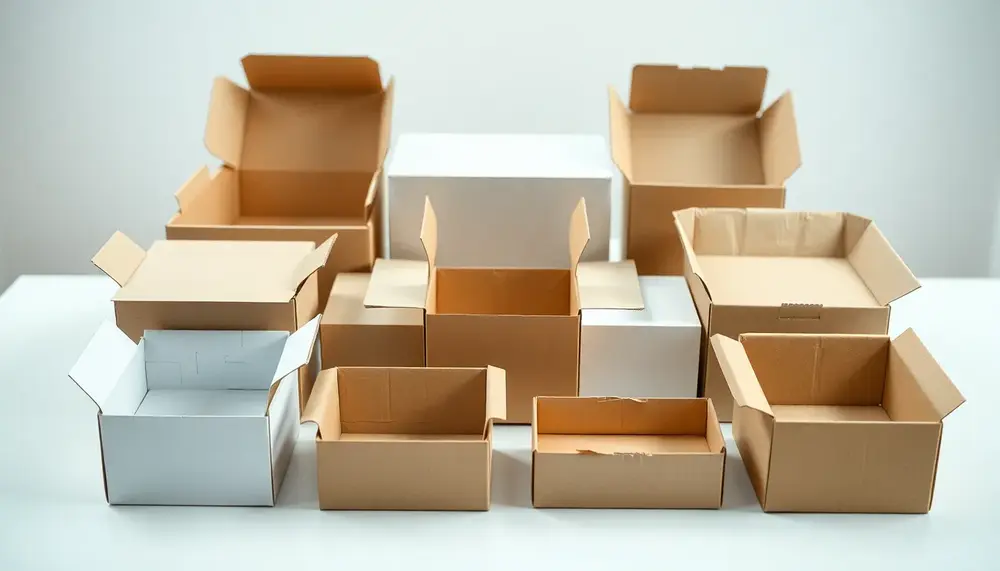Table of Contents:
Comprehensive Overview of Packaging Box Types in Germany
Germany’s packaging box landscape is a true kaleidoscope, shaped by relentless innovation and an almost obsessive attention to detail. If you think a box is just a box, you’re in for a surprise. German manufacturers offer a dazzling spectrum, from ultra-sturdy corrugated shipping boxes engineered for industrial weight to sleek, presentation-ready gift packaging that practically sells the product for you. But let’s not get ahead of ourselves—here’s what really sets the German market apart:
- Corrugated Shipping Boxes: Not just your average brown box. These come in single, double, or even triple-wall varieties, each tailored for specific load requirements. Think pharmaceutical exports, heavy machinery, or even delicate electronics—each gets its own specialized structure.
- Endless Customization: Need a box that fits a product like a glove? German suppliers excel at maßgeschneiderte Lösungen—custom sizes, die-cut forms, and print-on-demand branding. It’s almost an art form, honestly.
- Specialty Boxes: Ever heard of Bag-in-Box systems for wine or juice? Or display trays that double as marketing tools? These niche products are widely available and often feature smart tech, like QR codes or even OLED indicators for freshness.
- Regulatory-Ready Solutions: Boxes for hazardous goods, temperature-sensitive pharma, or food-grade applications aren’t just “available”—they’re rigorously tested and certified to meet Germany’s famously strict standards.
- Eco-Innovations: Graspaper, recycled fibers, and compostable coatings are not fringe trends here—they’re mainstream. Many suppliers now offer boxes that meet or exceed 2024’s new environmental regulations, making sustainability the default, not the exception.
In short, the German packaging box market is a dynamic, highly segmented field where function, compliance, and branding are engineered into every fold and seam. If you need a box for something—anything—chances are, there’s a German supplier who’s already perfected it.
Tailored Packaging Solutions: From Standard to Custom-Made
When it comes to tailored packaging solutions in Germany, the range extends far beyond simple size adjustments. German providers have honed a multi-layered approach, where standard packaging is merely the starting point for much more sophisticated offerings. You’ll find a strong emphasis on modularity—think packaging systems that adapt to fluctuating product lines or seasonal promotions without the need for a complete redesign each time. This saves both time and money, and honestly, who doesn’t want that?
- Hybrid Packaging Concepts: It’s not unusual to see packaging that merges materials—combining, for example, corrugated board with transparent windows or foam inserts for premium electronics. This isn’t just about aesthetics; it’s about optimizing protection and shelf appeal in one go.
- Personalized Branding Elements: German suppliers frequently integrate digital printing, tactile finishes, and even interactive elements like NFC tags or scratch-off panels. These touches turn packaging into a marketing tool, boosting customer engagement right at the unboxing moment.
- Rapid Prototyping & Short Runs: With advanced CAD systems and digital manufacturing, even small businesses can order short runs of custom packaging. No need to commit to thousands of units—flexibility is the name of the game here.
- Compliance-Driven Customization: For industries like pharma or food, custom solutions are engineered to meet exacting hygiene, traceability, and safety standards. This means tamper-evident closures, serialized labeling, and integrated documentation pockets, all tailored to regulatory needs.
- On-Demand Adaptation: Many German companies now offer online configurators, letting customers design and visualize their packaging in real time. You tweak dimensions, select materials, and preview graphics—then order with a click. It’s packaging as a service, not just a product.
So, whether you’re launching a new product, handling sensitive goods, or just want your brand to stand out, Germany’s tailored packaging solutions provide a toolkit that’s as flexible as it is future-proof. The blend of technical precision and creative flair is, frankly, hard to beat.
Pros and Cons of German Packaging Boxes
| Pros | Cons |
|---|---|
| Wide variety of types: from industrial corrugated boxes to stylish gift packaging and specialty solutions. | Complex regulatory environment may require additional compliance effort, particularly for export or niche applications. |
| Strong focus on customization: tailored sizes, structures, and branded designs are standard. | High customization and quality can lead to increased costs for small batches or start-ups. |
| Advanced sustainability: use of recycled fibers, compostable coatings, and innovative materials like grass paper. | Some sustainable materials may have performance limitations compared to traditional options. |
| Integrated digital services: easy online configuration, ordering, and real-time tracking. | Digital platforms and customization tools may have a learning curve for new users. |
| Value-added features: smart packaging (QR codes, sensors), modularity, compliance-driven solutions. | Innovative features can add complexity to the packaging process and potentially to logistics. |
| Strong consulting and support: expert guidance ensures optimal solutions and regulatory compliance. | Consulting services may increase up-front investment for complex projects. |
| Efficient logistics: rapid prototyping, short runs, and strategic distribution make time-to-market faster. | Highly tailored logistics and short runs might not benefit companies seeking low-cost, high-volume standardization. |
Advanced Services: Design, Digital Ordering, and Consulting
German packaging providers have taken service to the next level, integrating advanced design, digital ordering, and consulting into seamless, customer-centric experiences. This isn’t just about selling boxes—it’s about delivering holistic solutions that anticipate business needs and remove friction from every step of the process.
- Collaborative Design Studios: Many companies now offer in-house design teams that work directly with clients, using 3D visualization and rapid prototyping. This means you can see, touch, and tweak your packaging concept before it ever hits production, reducing costly errors and ensuring brand consistency.
- Digital Ordering Ecosystems: Forget endless email chains. Modern platforms allow you to manage quotes, approvals, and reorders from a single dashboard. Real-time inventory tracking, automated restocking alerts, and detailed analytics are standard, giving you total control over your packaging supply chain.
- Expert Consulting for Compliance and Efficiency: Regulatory landscapes change fast, especially in Germany. Specialist consultants guide clients through the maze of packaging laws, environmental directives, and logistics optimization. This expertise can help avoid legal pitfalls and cut costs by streamlining materials and processes.
- Integrated Artwork and Branding Support: It’s not just about structural design—providers offer full-service support for artwork, print optimization, and even color management, ensuring every box aligns with your visual identity and marketing goals.
- Lifecycle and Sustainability Audits: Some firms go a step further, analyzing the entire lifecycle of your packaging. They’ll recommend ways to reduce waste, improve recyclability, and enhance sustainability credentials, which is increasingly vital for both compliance and brand reputation.
In short, these advanced services turn packaging from a logistical afterthought into a strategic asset—one that’s agile, compliant, and ready for whatever the market throws your way.
Packaging Needs Across German Industries: Case Studies
Packaging requirements in Germany are as diverse as its industries, with each sector demanding unique solutions that address both practical and regulatory challenges. Let’s take a closer look at how packaging providers respond to these needs through real-world case studies.
- Food & Beverage: A leading organic juice producer faced issues with product freshness and shelf-life. By collaborating with a packaging firm specializing in oxygen-barrier technology, they adopted multilayer cartons with integrated freshness indicators. This not only extended shelf-life but also provided real-time quality assurance for retailers and consumers.
- Pharmaceuticals: A mid-sized pharma company needed packaging that could guarantee tamper evidence and support cold-chain logistics. The solution: custom-designed folding cartons with embedded temperature sensors and serialized QR codes for end-to-end traceability. This ensured compliance with German and EU regulations while safeguarding product integrity.
- Automotive: An automotive supplier struggled with high rates of part damage during transit. Working with a packaging engineer, they implemented reusable, shock-absorbing transport boxes tailored to specific component geometries. The result was a dramatic reduction in breakage and lower overall logistics costs.
- Cosmetics: A premium skincare brand sought to reinforce its eco-friendly image. They partnered with a supplier offering molded pulp trays and FSC-certified outer boxes, achieving a plastic-free, visually appealing packaging solution that resonated with sustainability-minded consumers.
- E-commerce: A fast-growing online retailer wanted to minimize returns due to shipping damage. Through a series of drop tests and data-driven adjustments, their packaging provider developed a modular system with adjustable inserts, optimizing protection for a wide range of products and reducing return rates by over 20%1.
These case studies show how German packaging solutions are never one-size-fits-all. Instead, they are meticulously engineered to solve industry-specific challenges, blending technical know-how with sector expertise for measurable business impact.
Sustainability and Innovation in German Packaging Boxes
German packaging manufacturers are setting benchmarks in sustainability and innovation, often outpacing regulatory requirements and industry norms. The drive for eco-friendly solutions is no longer a marketing gimmick—it's a technical and operational imperative that shapes every stage of packaging development.
- Material Science Breakthroughs: Suppliers are investing in next-generation substrates such as grass paper, mushroom-based packaging, and high-strength recycled fibers. These materials offer reduced carbon footprints and, in some cases, even improve the protective qualities of traditional boxes.
- Closed-Loop Recycling Systems: Several companies now operate take-back schemes, where used packaging is collected, processed, and reintroduced into the production cycle. This circular approach minimizes waste and supports compliance with Germany’s VerpackG and EU directives.
- Intelligent Packaging Features: Innovations include embedded sensors that monitor humidity or shock, and smart labels that provide real-time tracking data. These features help reduce spoilage and loss, directly supporting sustainability by cutting unnecessary waste.
- Energy-Efficient Manufacturing: Production lines are increasingly powered by renewable energy, with heat recovery systems and water recycling now standard in many facilities. This not only lowers emissions but also meets growing customer demand for low-impact packaging.
- Modular and Reusable Designs: New box concepts are designed for multiple life cycles, with modular components that can be reconfigured or returned for reuse. This approach is especially popular in B2B logistics, where durability and waste reduction are critical.
In essence, sustainability and innovation are deeply intertwined in the German packaging sector, driving a wave of solutions that are both environmentally responsible and technologically advanced.
Seamless Ordering and Logistics Processes in Germany
Ordering and logistics for packaging boxes in Germany have become remarkably streamlined, thanks to digital transformation and a culture of operational precision. Customers—from small startups to large-scale manufacturers—benefit from transparent, real-time processes that reduce errors and save valuable time.
- Integrated Order Management: Centralized online portals allow users to place, track, and modify orders in one place. Automated status updates and shipment notifications keep all stakeholders informed, minimizing the risk of miscommunication.
- Flexible Payment and Delivery Options: Providers offer a variety of payment methods, including instant digital payments and invoicing tailored to business needs. Delivery schedules can be adapted to urgent requirements or planned for regular, recurring shipments.
- Transparent Inventory and Stock Solutions: Customers can access live inventory data, enabling just-in-time ordering and efficient warehouse management. Some suppliers even offer consignment stock, reducing capital tied up in packaging materials.
- Optimized Logistics Networks: Strategic warehouse locations and partnerships with leading logistics firms ensure fast, reliable delivery across Germany and into neighboring countries. Real-time tracking and proactive issue resolution are standard, even for complex, multi-site operations.
- Dedicated Customer Support: Multilingual teams provide assistance via phone, email, or chat, guiding clients through order adjustments, delivery queries, and urgent requests. This human touch, combined with automation, guarantees a smooth experience from inquiry to delivery.
Ultimately, the seamless integration of digital tools and expert support in Germany’s packaging sector ensures that customers receive exactly what they need, exactly when they need it—no surprises, no headaches.
Market Benefits: How German Packaging Boxes Deliver Value
German packaging boxes offer a suite of market advantages that go well beyond the basics of protection and transport. These benefits translate directly into measurable value for businesses, whether they operate locally or on a global scale.
- Accelerated Time-to-Market: Short lead times and agile production cycles enable rapid product launches and seasonal campaigns. This speed is a game-changer for brands looking to capitalize on market trends without delays.
- Enhanced Brand Perception: High-quality packaging signals reliability and professionalism, influencing consumer trust and repeat purchases. German boxes are often associated with meticulous craftsmanship, which strengthens brand positioning in competitive markets.
- Cost Efficiency Through Optimization: Providers leverage data analytics and advanced forecasting to minimize material waste and optimize packaging dimensions. This results in lower shipping costs and reduced environmental levies, benefiting the bottom line.
- Global Regulatory Readiness: German packaging solutions are designed to meet international standards, smoothing the path for export and cross-border trade. This reduces compliance risks and simplifies expansion into new markets.
- Risk Mitigation: Robust quality assurance processes and traceability features help prevent costly recalls and product losses. This proactive approach safeguards both reputation and revenue.
- Custom Support for Niche Markets: Providers offer specialized expertise for sectors like luxury goods, hazardous materials, and temperature-sensitive products. This tailored approach unlocks opportunities in high-value and regulated market segments.
In summary, German packaging boxes deliver value through speed, quality, efficiency, and strategic market alignment—empowering businesses to compete and grow with confidence.
FAQ about Packaging Boxes in Germany
What types of packaging boxes are most common in Germany?
The most common packaging boxes in Germany are corrugated shipping boxes, which are available in various strengths and formats. Additionally, there are specialty boxes such as Bag-in-Box systems, presentation trays, and gift boxes, as well as fully custom-made packaging solutions.
How do German packaging suppliers support sustainability?
German packaging suppliers focus on sustainability by using recycled materials, innovative substrates like grass paper, compostable coatings, and supporting closed-loop recycling systems. Many providers exceed current eco-standards and offer environmentally friendly solutions as the norm.
How does the ordering process for packaging boxes work in Germany?
The ordering process is highly digitized, often managed through user-friendly online portals. Clients can configure packaging, receive instant quotes, place orders, track shipments in real time, and manage inventory seamlessly, with options for a range of payment and delivery methods.
Which industries in Germany most benefit from advanced packaging solutions?
Industries such as food and beverage, pharmaceuticals, automotive, cosmetics, and e-commerce particularly benefit from Germany’s advanced packaging solutions. Each sector has unique requirements related to safety, product protection, branding, and regulatory compliance, which are addressed with tailored packaging innovations.
What are the key advantages of using German packaging boxes?
Key advantages include a wide product range, high degree of customization, focus on sustainability, rapid time-to-market, robust compliance with global standards, reliable logistics, and strong consulting and support services. These benefits make German packaging boxes a top choice for businesses seeking quality and innovation.






